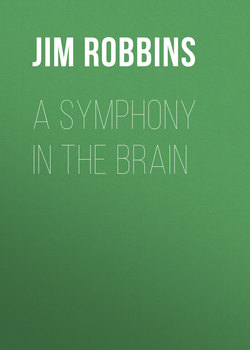A Symphony in the Brain

Реклама. ООО «ЛитРес», ИНН: 7719571260.
Оглавление
Jim Robbins. A Symphony in the Brain
Отрывок из книги
A Symphony
in the Brain
.....
Before they learned how to measure the signals being emitted, researchers actually learned how to put electricity into the brain with great effect, and it became an indispensable technique for mapping brain function. Two German physicians, Gustav Fritsch and Eduard Hitzig, working at a military hospital, discovered they could electrically stimulate the brains of patients who had parts of their skull blown away in battle. Using a galvanic battery that delivered a tiny dose of current, Hitzig wired patches of exposed brain and found that stimulating the back of the brain, the occipital lobe, caused a patient's eyes to move involuntarily. The two men later experimented on live dogs to see which part of the brain corresponded to which voluntary motor controls. Stimulation was a vital tool that expanded understanding of the brain and quickly became more sophisticated. Two Englishmen, Charles Beevor and Victor Horsley, worked with an orangutan. They divided the brain into a grid of two-millimeter sections, and they numbered each square. Then they methodically stimulated parts of the animal's brain and created a detailed map of function—squares 95, 96,121, and 127, for example, caused elevation of the animal's lip on the upper right side. Electrical stimulation of the brain created an intricate picture of the brain that remains an indispensable part of neuroscience to this day.
In the 1880s an Italian anatomist named Camillo Golgi developed a new stain that made nerve cells much easier to study under the microscope—a seminal development, for it had been impossible to enhance the microscopic cell without killing it. Using the new stain, a Spanish anatomist named Santiago Ramon y Cajal turned the nascent world of neuroscience on its ear: he discovered the brain cell, the neuron. Until then the human brain had been thought of as just a blob. He also described the basics of how the cells pass on impulses, by reaching out to the body or dendrite of an adjacent cell with a kind of cable called an axon. He went on to make several other major discoveries about brain cells, including the fact that nerve cells morph or change. As a person studies a subject or learns to play an instrument, nerve cells along a pathway involved in the skill make more connections with other cells. In 1906 he shared the Nobel Prize with Camillo Golgi.
.....